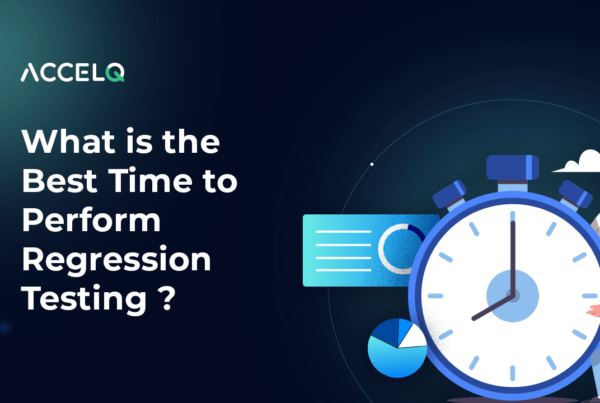Understanding Black Box Testing Techniques & Applications

In this user-centric development world focusing on new features and delivering applications that work and fulfill their purpose without digging into the code, a black box testing approach is relevant nowadays. Black box techniques simulate the use of an app by a real-world user who only knows the inputs and outputs of a system; this indicates how well an app conforms to its functional requirements. This accelerates the process and gives an unbiased view of usability and performance from an end-user perspective.
Whether on e-commerce portals or banking applications, black box testing techniques, including equivalence partitioning, boundary value analysis, and decision table testing, are necessary to confirm proper app responses to different end-user events. Those were the advanced approaches, and now we can see how they contribute to enriching the software reliability, security, and user satisfaction across diverse industries.
Advanced Black Box Testing Techniques
Black box testing has come a long way from traditional methods, providing effective techniques for increasing the coverage and depth of tests that do not require access to the internal code structure. Testers using advanced black box testing techniques can assess complex applications by examining functionality and behavior to pinpoint critical problems that might otherwise be overlooked.
With strategic techniques like decision table testing, boundary value analysis, and state transition testing, testers can mimic real-life conditions, reveal secret bugs, and perfect the user journey. The subsequent table analyses the critical advanced techniques and provides an overview of how each technique can assist in maximizing the return on testing effort to deliver better-quality software.
| Technique | Description | Example |
|---|---|---|
| Equivalence Partitioning (EP) | Divides input data into partitions where each partition is expected to behave similarly. | For a form accepting age, partition values into ranges 1-17, 18-60, and 61+. Test one value per range. |
| Boundary Value Analysis (BVA) | Tests the values at the edge of the input ranges to catch errors. | For a form that accepts age input only between 18 to 60, It tests values like 17, 18, and 60, 61. |
| Decision Table Testing | Uses decision tables to map out all possible input combinations and expected outputs for complex business logic. | Validating combinations of user types (guest, registered user) and payment methods (credit card, PayPal). |
| State Transition Testing | This test shows how the system behaves when moving from one state to another based on different inputs. It is ideal for workflows. | Testing a login system where inputs trigger transitions between “logged out,” “logged in,” and “session expired.” |
| Cause-Effect Graphing | Graphically represent the relationship between inputs (causes) and outputs (effects) to identify key test cases. | Mapping inputs and outputs for a calculator app, ensuring proper operations for all input combinations. |
| Error Guessing | Relies on the tester’s experience to predict common issues and create test cases around potential problem areas. | Testing for invalid input formats like entering letters into a numeric field or leaving required fields blank. |
Applications of Black Box Testing Techniques
1. Web Application Testing
Black box techniques are highly effective in web application testing, where diverse inputs and user interactions need validation. Techniques like boundary value analysis and equivalence partitioning can be used to test form validations, while state transition testing can be applied to user session management.
2. Mobile App Testing
Mobile apps often interact with different hardware and network conditions. Black box techniques such as decision table testing and state transition testing ensure that the app behaves as expected across various device states and input combinations.
3. Embedded Systems
For embedded systems with limited user interfaces, black box techniques such as cause-effect graphing help test how the system reacts to various hardware inputs and outputs without needing to access internal code.
4. Cloud-Based Systems
Cloud applications have complex architectures involving different services and APIs. Boundary value analysis and error guessing can help uncover vulnerabilities or performance bottlenecks when these applications are tested with varying inputs under different load conditions.
How to Select the Right Black Box Technique?
Selecting the appropriate black box technique depends on several factors:
The right technique should be chosen based on the specific goals of the testing phase, such as functionality validation, performance checks, or security testing.
- Nature of the Application: State transition testing is ideal for systems with well-defined states, such as authentication systems.
- The complexity of Input: If an application deals with various inputs, equivalence partitioning and boundary value analysis can reduce the number of test cases while ensuring adequate coverage.
- Business Rules and Logic: Decision table testing effectively maps out the various combinations of inputs and outputs for applications with complex business logic.
- Tester’s Expertise: Techniques like error guessing rely on the tester’s intuition and experience, making it suitable for uncovering edge cases and common mistakes that structured methods may not cover.
- Testing Objectives: For performance and security-related tests, boundary value analysis and cause-effect graphing are often the most appropriate methods.
How ACCELQ Supports Advanced Black Box Testing Techniques?
ACCELQ offers robust support for advanced black box testing techniques through its AI-powered, nocode platform. Here’s how ACCELQ enhances these testing approaches:
- Automated Test Creation: ACCELQ simplifies the implementation of techniques like equivalence partitioning and boundary value analysis by automating the test case generation process. This reduces manual effort and ensures comprehensive test coverage.
- State Transition Testing: With ACCELQ’s visual modeling capabilities, testers can easily define and test state transitions, ensuring that complex systems like authentication or transaction flows are thoroughly tested.
- Intuitive Decision Table Creation: ACCELQ’s customized workflows for decision table testing enable testers to swiftly build, run, and assess test scenarios for complicated business logic.
- Error Guessing and Exploratory Testing: AI-driven insights assist in identifying possible weak points, improving the error-guessing process. This enables better exploratory testing without requiring extensive technical understanding of the codebase.
Conclusion
Whether your team works on web, mobile, or embedded applications, black box testing techniques are necessary to assess complex systems properly. Using the appropriate techniques allows your team to discover problems in their early stages, enhance app quality, and maximize your experience as an end-user.
ACCELQ optimizes these methods by combining automation with intelligent insights powered by AI to make your testing process more efficient, scalable, and insightful. Experience the ACCELQ edge and see how our platform takes your Testing strategy to a different level. Start a 14-day free trial here now and open up a path with less resistance towards quality.
Prashanth Punnam
Sr. Technical Content Writer
With over 8 years of experience transforming complex technical concepts into engaging and accessible content. Skilled in creating high-impact articles, user manuals, whitepapers, and case studies, he builds brand authority and captivates diverse audiences while ensuring technical accuracy and clarity.
Discover More
 What Is Chaos Engineering? Principles, Best Practices, Advantages
What Is Chaos Engineering? Principles, Best Practices, Advantages
What Is Chaos Engineering? Principles, Best Practices, Advantages
 What is the Best Time to Perform Regression Testing?
What is the Best Time to Perform Regression Testing?
































